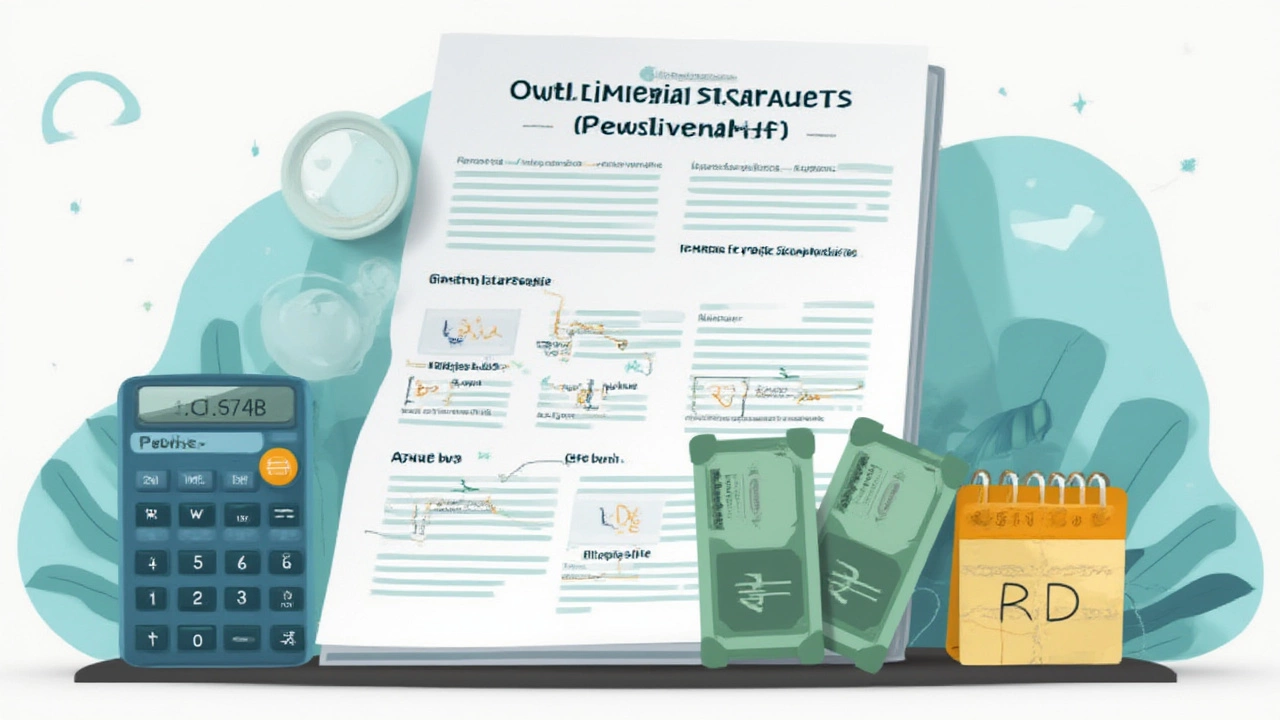Ever seen the price tag on dental implants and felt your jaw nearly drop? For anyone thinking about getting a tooth replaced, the sticker shock is real—the kind that makes you sit back and wonder, “Is my dental insurance actually going to help pay for this?” If you’re expecting insurance to pick up most of the bill, it’s time for a reality check. Dental implants are among the priciest dental procedures, and insurance plans cover them only in very specific ways. Let’s pull back the curtain and see exactly how much dental insurance really pays for implants, why those numbers are honestly all over the place, and what you can do to make the whole process hurt your bank account a little less.
Breaking Down the Numbers: What Dental Insurance Pays for Implants
Start with the hard truth: standard dental insurance plans rarely spring for the entire cost of dental implants. Most only pay for a portion if they pay at all. Unlike a simple filling, which is often covered up to 80%, insurance treats implants as a major procedure—sometimes they even consider it a cosmetic choice instead of a medical need, and that changes everything. Plans vary wildly among insurers in the US and across the globe, so one person’s experience might look totally different from another’s. But let’s talk in real numbers that you’re likely to run into in 2025.
On average, a single dental implant in the US comes with a bill anywhere from $3,500 to $6,000 or even more, depending on where you live, the dentist you choose, and whether you need extra work like bone grafting. When you hand that bill to your insurer, here’s what usually happens: most dental insurance policies have yearly maximum benefits of around $1,000 to $2,000. Some plans only offer $1,500. And that’s not just for implants—that’s for everything you need that year: cleanings, fillings, crowns, root canals, you name it.
Now, if your plan does include any implant coverage, it might pay for 50% of “major procedures,” which is what they call implants. The catch? The amount the insurance will actually reimburse is capped by your yearly maximum. So if your implant costs $5,000 and your plan pays 50%, they'll cover $2,500—but your plan maximum is $1,500 for the year, so $1,500 is all they’ll pay. And that’s assuming nothing else ate up your benefits earlier in the year.
Here’s a quick table to sum up some typical coverage points:
| Implant Cost (Single Tooth) | Coverage Rate | Yearly Maximum Benefit | Most Insurance Pays |
|---|---|---|---|
| $3,500 | 50% | $1,500 | $1,500 |
| $4,500 | 50% | $2,000 | $2,000 |
| $5,000 | 50% | $1,000 | $1,000 |
| $6,000 | 50% | $1,500 | $1,500 |
Painful, right? Also, some plans exclude implants altogether, so always check the fine print or call your insurance rep and ask about “implant benefits.” They’ll probably have a separate booklet or webpage for that.
Here’s something not everyone tells you: about 97% of standard dental plans in the US as of 2025 do not cover the full implant—they’ll often pay toward the cheapest alternative (like a bridge or removable partial denture) and you pay the rest. This is called an “alternative benefit provision,” and it makes the process even trickier. In plain English, if a cheap bridge is $1,000, your insurance might contribute based on that, and you’re left footing the bill for the extra $4,000.

Why Does Dental Insurance Cover So Little for Implants?
So, why all these hoops and tiny numbers when it comes to implant coverage? Dental insurance isn’t like medical insurance. Rather than paying for catastrophic care, standard dental plans are built to encourage routine checkups and basic preventive work. Their whole model is about keeping small costs manageable, not covering big-ticket repairs. When they do cover major stuff like crowns or implants, it's usually at a lower percentage and with those annual maximums—a holdover from the 1970s when a $1,000 limit was generous, and nobody adjusted for inflation. Imagine if your medical insurance still covered only $1,500 in hospital bills per year.
Another reason for low coverage is that insurance companies know that implants are optional for many cases—meaning you could get a cheaper bridge or a removable partial denture instead. For patients who lost teeth due to trauma, cancer, or certain illnesses, sometimes insurance will make exceptions and offer more help. Sometimes. But for most adults who just need to replace a tooth, “major” dental work like implants falls under restrictive rules.
Interestingly, a handful of premium dental insurance plans and dental discount plans added in 2025 now offer “implant rider” options. Riders are like mini-insurance add-ons: for a higher monthly premium, you could bump your annual max to $2,500 or $3,500 and get a higher percentage (like 70%) covered after a year’s waiting period. These are popular with bigger employers, but rarely solo policies. If you have work-based dental insurance, call HR and ask if there’s an “implant rider” or major services upgrade—they don’t always advertise these, but it’s worth finding out.
Let’s not forget insurance waiting periods. Even if you just bought dental insurance and it claims to include implant coverage, there’s often a 12- to 24-month wait before you can use the implant benefit. Insurance companies do this so people don’t sign up, get expensive work in a month, then quit the plan.
And don’t overlook the way dental insurance counts costs by categories: preventive (cleanings, exams, X-rays), basic (fillings, root canals, simple extractions), and major (crowns, bridges, dentures, implants). Implants usually land in the toughest-to-pay field, “major,” with the lowest reimbursement rates and strictest max benefits. All of this explains why your dental insurance feels so… stingy, even when you’re forking over hefty monthly premiums.
On the bright side, if your implant is medically necessary—for instance, you lost teeth due to a jaw injury, or you’re reconstructing your mouth after head or neck cancer—medical insurance (not dental) might pay a larger chunk of the total. But this takes lots of paperwork, and you usually need documentation from both your dentist and your doctor. Even then, it’s not guaranteed, and the process can drag on for months.

Sneaky Ways to Maximize Your Implant Coverage and Save Money
Don’t let insurance rules kick you around—you can still trim those implant bills if you’re smart about timing, shopping, and negotiation. Start by planning your procedure around your annual benefit. For example, if you need work on several teeth, see if you can split the procedures between two benefit years. Knock out a tooth extraction and bone graft in December, reach your max, then do the implant post and crown in January when your benefits reset. Dentists see this strategy all the time—it’s perfectly legit if you’re able to stage the work.
Compare plans, and don’t just look at premium costs. Study the summary of benefits for each plan you’re considering. Does any plan offer a higher annual max or a special implant rider? What’s the reimbursement percentage for major procedures? Don’t forget the waiting period and whether there’s a missing tooth clause (some policies deny coverage for teeth lost before you bought the insurance).
Look into alternative savings options. Dental discount plans aren’t insurance, but they knock 10-60% off the sticker price for implants if your dentist participates. And unlike insurance, there’s usually no cap or waiting period. Just remember: you pay the dentist directly, you don’t submit claims.
Some big employers or unions offer dental plans with higher annual maximums—sometimes up to $5,000 for major work. While rare, if you belong to a professional organization, alumni group, or union, check for exclusive dental benefits not available to the public. Medicare generally doesn't cover implants (not even in 2025), but some Medicare Advantage plans (Part C) have started to add dental coverage perks. The fine print is everything, so ask for written evidence of what’s included.
If you’re after the best rate, shop around—dentists set their own prices, and there’s often a $2,000 swing in the quote for the exact same procedure within the same city. Don’t be shy about asking for a breakdown of every item (consult, 3D X-rays, implant post, abutment, crown, anesthesia), and get these estimates in writing. Some dentists offer in-house financing or cash discounts for paying upfront.
Got a Health Savings Account (HSA) or Flexible Spending Account (FSA)? Good news: you can often use HSA or FSA money to pay for implants, making your out-of-pocket costs tax-free. If you’re on the fence, talk to your employer’s benefits office or a tax advisor for tips. In 2025, the HSA contribution limit is $4,300 for individuals—a helpful chunk if you plan ahead.
And if things still feel overwhelming, there’s one last tip: see if your area has a dental school. Many teaching clinics offer big discounts (50% or more) since students perform the treatment under supervision. You might have to wait a bit longer or make a few more visits, but the savings are real.
When all is said and done, dental insurance won’t make dental implants cheap or easy, but with the right planning, you don’t have to swallow the whole cost alone. Every bit of coverage helps, and there are ways—sometimes hidden in the fine print or in smart timing—to get help footing the bill. So before you decide implants are out of reach, get armed with information, and give your wallet a fighting chance.
